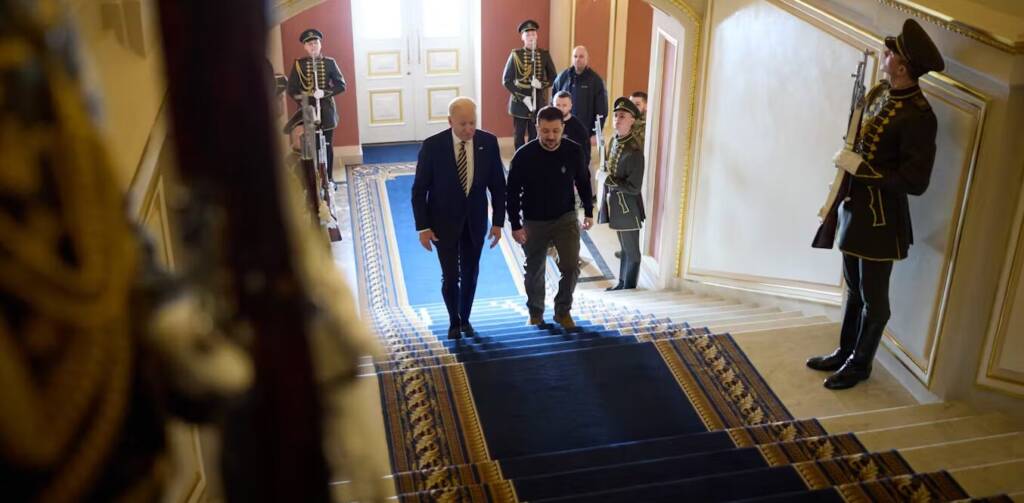Ukraine’s fate is now at the mercy of the U.S. Congress, and things haven’t looked this grim since Russia’s initial invasion in early 2022. Take, for example, the latest Russian push toward Kharkiv. They’re not trying to conquer Ukraine’s second-largest city but are making it clear that Ukraine is paying dearly for America’s—and its own—delays in preparation. Meanwhile, Biden’s administration looks on helplessly, unable to enable Kyiv to strike back at Russia directly.
The battlefield around Kharkiv has seen dramatic swings. The Russians nearly took the city in 2022, only to pull back amid faint hopes of peace. When that fell through, Western media triumphantly declared a Ukrainian counteroffensive had pushed the Russians out. But now, the Russians are back, casually planting flags wherever they please.
Putin’s current force of 30,000 to 50,000 soldiers isn’t there to seize Kharkiv. Instead, they’re focused on creating a buffer zone to protect Russia’s own border. Ukrainian forces have been pestering the citizens of Belgorod, just 40 miles north of Kharkiv, and Putin wants to put a stop to these pesky attacks.
By bringing Kharkiv within range of Russian artillery, Putin can make the city uninhabitable without actually taking it. Additionally, he’s softening up Ukrainian defenses in preparation for the next phase. The main Russian offensive this spring and summer is expected to focus on the Donbass region, not Kharkiv. The objective? Capture as much territory as possible, with attacks on key locations like Chasiv Yar already underway.
Moscow’s strategy seems to be banking on Ukraine’s lack of manpower and firepower to defend everywhere at once. If Ukraine diverts its limited resources to protect Kharkiv, it becomes more vulnerable in the east. This situation in Kharkiv highlights Russia’s broader strategy and underscores the dire straits Ukraine currently faces.
So, as Ukraine scrambles to defend itself, one can only wonder: is there a plan B, or are they just winging it?
Right now, Kyiv is in that awkward phase where U.S. aid has been approved but hasn’t quite arrived yet. Until then, Ukrainian forces are scrambling for everything from bullets to artillery to air defenses. President Zelensky and Ukrainian lawmakers, ever the procrastinators, delayed mobilizing more troops and building fortifications. Sure, they’re digging in now, but it’s a bit like building an umbrella during a rainstorm.
While there’s plenty of blame to go around in Kyiv, let’s not forget the American elephant in the room. It wasn’t exactly a secret that Russia was gearing up to encircle Kharkiv, although the timing did catch Ukraine off guard. Yet, Kyiv’s hands were tied because the U.S. has this quaint rule against using American weapons for cross-border attacks.
In practice, this means Ukraine can’t use its shiny new HIMARS to blow up Russian ammo dumps just across the border, nor can it deploy long-range missiles against targets within Russia. Even U.S.-provided air defenses are off-limits for targeting Russian aircraft that are bombing Ukrainian positions with impunity from their own airspace.
This policy is a head-scratcher for Zelensky but a masterstroke of caution for Biden. Joe Biden’s rationale is that using U.S. weapons on Russian soil would escalate the conflict. Putin, always the showman, exploits this fear by threatening to strike NATO countries if such weapons are used.
Biden understands that any escalation could turn this into a full-blown Russia-NATO war, something he’d rather avoid. After all, he’s already got the Afghanistan debacle on his record. Losing Ukraine would be like handing Trump the Oval Office keys on a silver platter.
Not everyone shares Biden’s cautious approach. The UK, now a shadow of its former military glory, has openly said it won’t stop Ukraine from using British arms for cross-border attacks—empty vessels, as they say. Meanwhile, German Chancellor Olaf Scholz keeps his advanced Taurus missiles tucked away, perhaps saving them for a rainy day.
